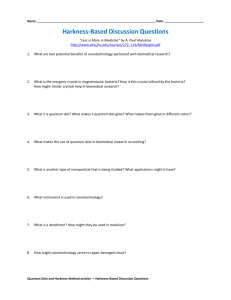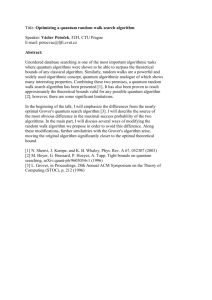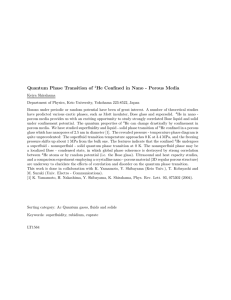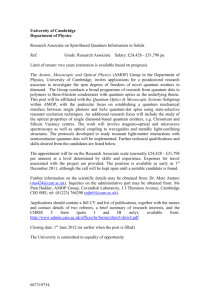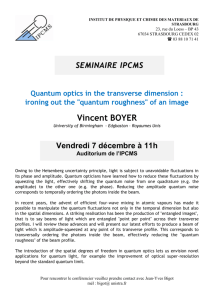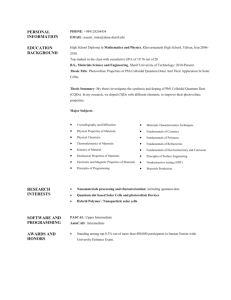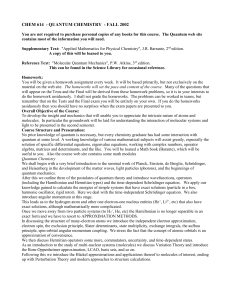From undulating Si quantum wires to Si quantum dots: a
advertisement
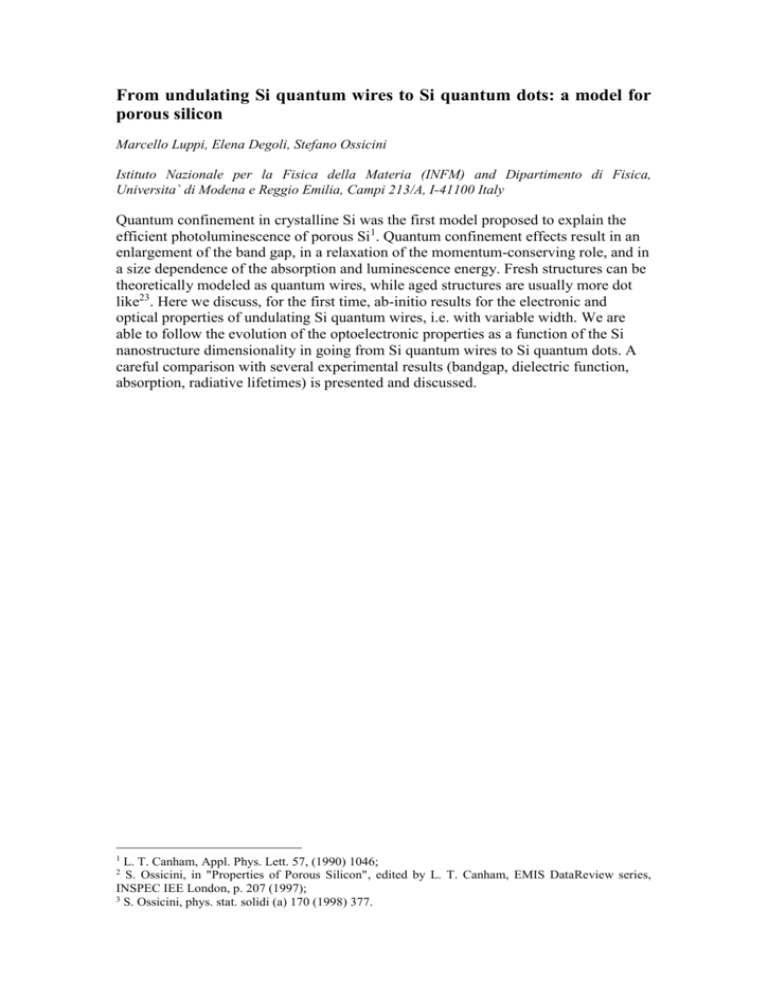
From undulating Si quantum wires to Si quantum dots: a model for porous silicon Marcello Luppi, Elena Degoli, Stefano Ossicini Istituto Nazionale per la Fisica della Materia (INFM) and Dipartimento di Fisica, Universita` di Modena e Reggio Emilia, Campi 213/A, I-41100 Italy Quantum confinement in crystalline Si was the first model proposed to explain the efficient photoluminescence of porous Si1. Quantum confinement effects result in an enlargement of the band gap, in a relaxation of the momentum-conserving role, and in a size dependence of the absorption and luminescence energy. Fresh structures can be theoretically modeled as quantum wires, while aged structures are usually more dot like23. Here we discuss, for the first time, ab-initio results for the electronic and optical properties of undulating Si quantum wires, i.e. with variable width. We are able to follow the evolution of the optoelectronic properties as a function of the Si nanostructure dimensionality in going from Si quantum wires to Si quantum dots. A careful comparison with several experimental results (bandgap, dielectric function, absorption, radiative lifetimes) is presented and discussed. 1 L. T. Canham, Appl. Phys. Lett. 57, (1990) 1046; S. Ossicini, in "Properties of Porous Silicon", edited by L. T. Canham, EMIS DataReview series, INSPEC IEE London, p. 207 (1997); 3 S. Ossicini, phys. stat. solidi (a) 170 (1998) 377. 2


